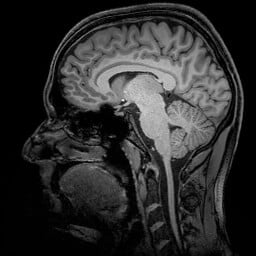By Finkscientifically
Cigarette smoking is a major health concern as it has many negative primary and secondary health consequences, especially in relation to the cardiovascular and pulmonary systems. Additionally, the addictive effects of tobacco use make it much harder for smokers to quit, a factor that only exacerbates these health risks. Sex differences have also been reported in both the response to cigarette smoking and nicotine and reasons for smoking. For instance, men are more sensitive to nicotine but have an easier time quitting than women, while women have higher relapse rates and are more prone to smoke in response to an external cue such as seeing another person smoke or smelling a cigarette. Despite these behavioral differences between men and women in relation to cigarette smoking, the underlying neural basis for these responses is not yet known. In the most recent issue of The Journal of Neuroscience, Cosgrove et al. investigates the neural correlates of these differences using a newly developed technique and identify a potential neurobiological reason for sex differences in relation to cigarette smoking.
Previous work investigating brain responses to smoking have used standard PET imaging, a common method for imaging brain activity. Despite the wealth of knowledge gained from PET imaging in many studies, this technique is not optimized to measure the quick brain responses associated with smoking. Specifically, smoking induces a release of dopamine, a neurotransmitter associated with reinforcement behaviors, reward seeking, cognition, and movement, in a particular brain area called the mesolimbic system, a release that is much too quick (minutes) for standard PET analysis. In this study, Yale University researchers designed a new method of PET imaging that allowed them to measure the fast dopamine events associated with smoking.
The authors imaged eight males and eight females using their PET technique to study how the mesolimbic brain areas of these subjects differed in relation to smoking. Patients were scanned for 35 minutes before being allowed to smoke cigarettes for the remainder of the scan. The scans from the patients were then used to create dopamine “movies” (dynamic sets of images of the dopamine response that occurs in response to the cigarette smoking).
The experiment identified a significant difference in the way that male and female brains respond to smoking. Specifically, the analysis showed that male subjects showed a significantly greater dopamine response in a particular area of the mesolimbic system called the “ventral striatum”, a response that was totally absent in the scans from the female subjects. Importantly, these patterns were consistent, suggesting real differences in the mesolimbic response to smoking between males and females.
To take it a step further, the authors of this study next looked at the temporal profile of these responses in the male and female subjects. This analysis identified a peak of dopamine activation in men that was significantly greater than the peak in women and this peak occurred rapidly, indicating a difference in the dopamine response time between sexes. In contrast, women showed faster dopamine rise times in the more dorsal striatum, suggesting this region might be more involve in female responses to cigarette smoking.
As the Cosgrove et al. study used an improved PET technique for measuring quicker dopamine responses in human subjects in response to cigarette smoking, these authors were able to investigate sex-based differences in brain responses to smoking, a comparison that is important for understanding the underlying causes of the well established behavioral differences seen between men and woman with cigarette smoking. A study directly linking similar PET results to the known sex-specific behavioral responses associated with smoking will be needed to further establish this link. Perhaps most importantly, the behavioral and neurobiological differences between men and women indicates that potential therapies for smoking cessation may need to be tailored to the sex of the patient being treated. As this study only used a limited number of subjects, it will be interesting to see whether similar patterns and differences can be replicated with much larger cohorts.
Cosgrove, K. P., Wang, S., Kim, S. J., McGovern, E., Nabulsi, N., Gao, H., et al. (2014). Sex Differences in the Brain’s Dopamine Signature of Cigarette Smoking. Journal of Neuroscience, 34(50), 16851–16855. doi:10.1523/JNEUROSCI.3661-14.2014
[twitter_follow username=”scientifinkally” language=”en”]


